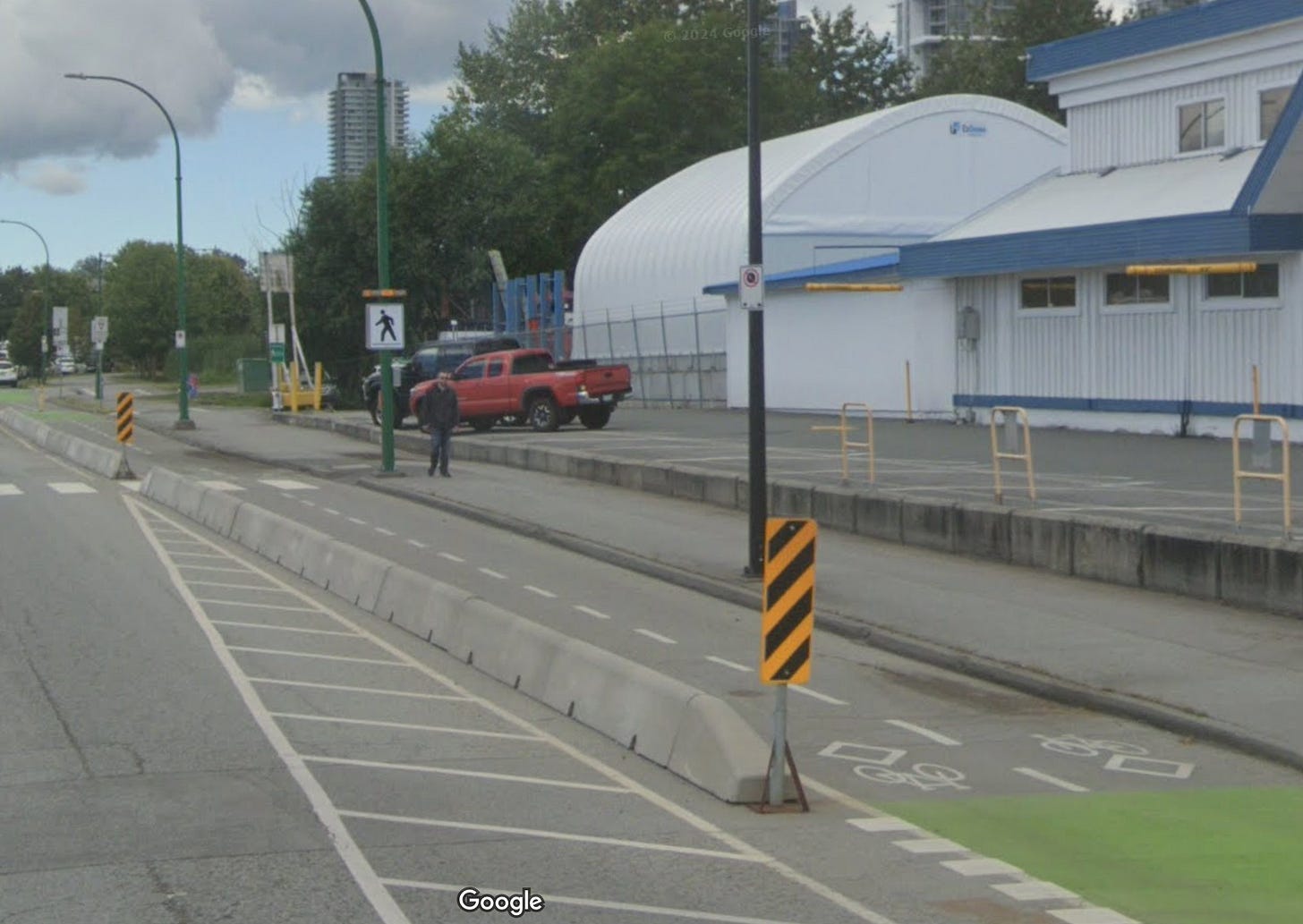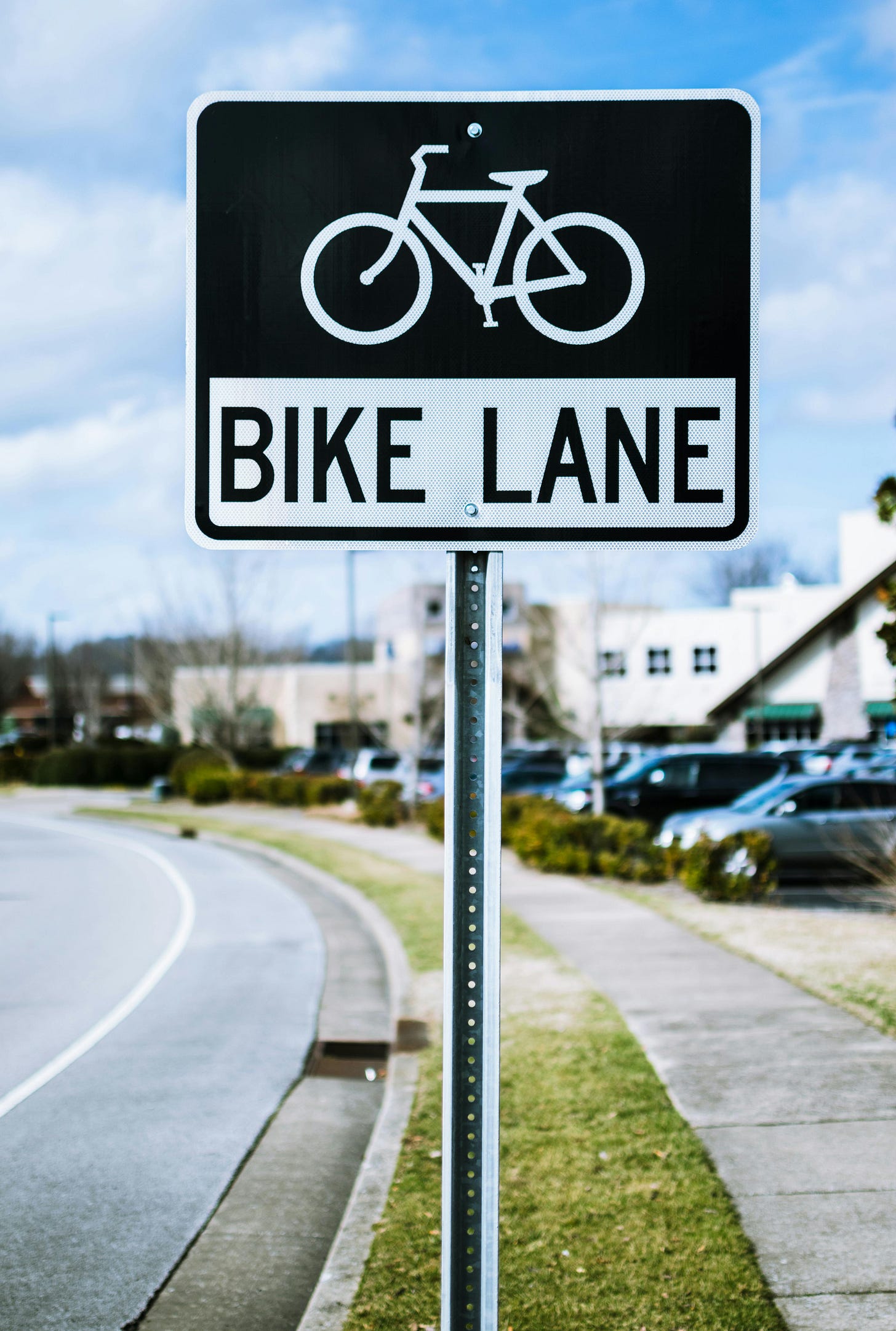Building Safer Bike Lanes
Iterative delivery works best when you deliver something concrete, not paint and plastic.
Bike lanes come in all shapes and sizes, as we well know. There's everything under the sun from grade-separated, bi-directional bikeways to the all-too-common, all-too-dangerous bicycle gutter. That's because bike lanes are often implemented iteratively in our communities, where leaders and planners think cyclists might need a route to get from A to B. If no one uses that route, why spend millions upfront to build that grade-separated bikeway? It would simply be a waste of taxpayer money and potentially politically damaging to those community leaders, should the opposition hold the project’s failure against them. So, let's explore the bike lane iteration process and see what improvements can be made to make it better.
Iterative Delivery
If you've not heard of iterative delivery or you're not familiar with product development, we'll explore what it is and how it’s applied to bicycle infrastructure. The concept of iterative delivery is not delivering your product in parts, but rather delivering something small that consumers can use to solve their problems. This is often used in agile software development, where deliveries are made early and often, rather than infrequent, large deliveries that make massive changes. This process is often preferred because it allows you to get feedback from your customers on features that took you week(s), not months or years to implement. Let's look at a simple example, tangentially related to bicycling.
Let's say you have a group of people looking to get from point A to B, and the distance between those points is 10 miles apart, as the crow flies in an urban area. There are a whole host of solutions for those people, but rather than try to deliver them a helicopter, which may get them to their destination faster, or a car, which may be the most versatile, you decide you can serve that market by delivering them a bicycle because it solves their problem and can be delivered sooner than either the car or the helicopter. Also, if you build it correctly, i.e., modularly and extensibly, you can work to add on and upgrade that bicycle into an e-bike or a car, should your market demand those features.
The Bicycle Gutter
Now, apply this approach to bicycle infrastructure, and we end up with the bicycle gutter as our initial delivery. Why? Technically, it solves the problem for people who are looking to ride their bicycle from point A to B. That doesn't mean it's a good solution, far from it. That's like taking the previous example above and deciding that Heelys is the best solution for those people traveling 10 miles in an urban area. Yes, you can say you’ve delivered a product that can transport those people 10 miles in a city, but it can also deliver you several lawsuits from personal injury attorneys regarding broken ankles. It's just not a safe solution.
We end up with bicycle gutters because they are a cheap first-step solution that is meant to be a proof of concept for a bike lane. However, the idea that "if you build it, people will come" doesn't always pan out. Bike lanes, particularly in North America, often end their iterative life as bicycle gutters because they don't see the usage to justify their improvement. People who ride bicycles don't see them as safe alternatives to other routes or other forms of transportation. Those who primarily use cars on these routes do not want to see the expansion of the bicycle infrastructure because they see it as losing their territory to the cyclist, who in this case, isn't enthused to use it anyway.
Concrete Details

Rather than paint, bike lanes should offer cyclists some form of protection from other road vehicles from their inception. There's a great video by the YouTube channel Shifter that covers some new bike lanes in Vancouver, where city leaders placed temporary concrete curbs, much like what you would see in parking lots, as barriers between the car and bicycle lanes. Then, they engaged the surrounding community to gauge their thoughts on the new bike lanes, making tweaks such as lane markings and improved sight lines. Not only did they start with a better solution than a bicycle gutter, but they started right away by implementing the bike lane where they saw the need and then sought feedback. That feedback, by the way, is much more impactful when you have something concrete to judge by, rather than technical plans, studies, and renderings - something I will be covering in a future article.
While 6-inch curbs and plastic bollards aren't going to prevent cars from barreling over and entering the bike lane, they act as a good deterrence for motorists who might otherwise see the bike lane as an "alternative route" for themselves. For other less selfish motorists who might just be distracted, running over paint doesn't indicate to them that they've drifted into the bike lane. A curb, on the other hand, offers them a nudge in the correct direction without causing significant damage. Cyclists, anecdotally, will prefer to ride in bike lanes that have this kind of separation, particularly when the alternative is a painted bike lane.
What’s next?
Temporary concrete curbs are there to prove the hypothesis. Once the evidence to support that hypothesis has been gathered, it’s time to make something permanent. It’s next to impossible for me to prescribe exactly what’s next for every instance of a bike lane. That can depend wildly on the context, but it’s really up to the local city planners to assess what the needs and pain points are and what are the next steps to move forward. Things should continue to change as part of the iterative process, but starting with a good foundation is what is most important to the success and adoption of cycling infrastructure.
End Game
In our world, road improvement projects take not only financial capital but often political capital to get completed. That reality means we don't often see major road projects undertaken in our cities for 5, 10, or 25 years, depending on the road and its importance to the community. This leads not only to the decay of our existing infrastructure but also the decay of service provided to the community. Those improvements could include increased capacity to ease congestion or more sustainable options, like our beloved bike lanes. We must ensure that we are building the right thing to satisfy those needs. When bicycle gutters get built, our communities remain underserved because often these just aren't safe enough for most people to feel comfortable using them.
But nothing is set in stone - we can build safe cycling infrastructure iteratively and not spend a fortune to do it. We, as members of our communities, can provide that feedback to our city leaders and ask not only for better solutions but a better iterative process that accounts for safety - both statistically and perceived - and connectivity for all modes of transport.


